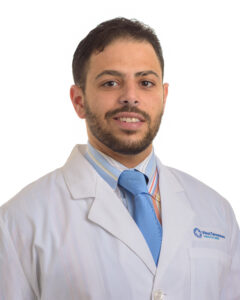Admit it, you read the word “lice” in the headline and immediately felt like something was crawling on your skin. These pesky little bugs plague many American families each year.
When your kids are home for summer, you probably don’t think much about lice. That’s for good reason. While lice can be a problem at any time of year, infestations are much more common during the school year.
That’s because kids are in close proximity to each other, and their personal items like hats or brushes are often shared or at least intermingled with those of other kids.

“Head lice pass from person to person usually through head-to-head contact,” says Michael Abdelmisseh, MD, pediatrician with West Tennessee Medical Group. “They don’t fly through the air and won’t hop around, but they can also be spread through clothing and personal items that come into contact with the head.”
So, what can you do to help your child avoid head lice? And what should you do if lice make an appearance? Read on to learn more.
What Lice Are
You probably have a general idea of what lice are, but do you know the full details? Head lice, which are more formally called “Pediculus humanus capitis,” are parasitic insects that are usually found on the scalp, in the eyebrows, or in the eyelashes of humans.
These bugs feed on human blood, which is why they often live on the scalp. This is what causes the intense itching associated with lice. Believe it or not, there is some good news related to these creepy crawlers—while they’re creepy and unwanted, they don’t spread disease.
Lice come in three forms: egg (or nit), nymph, and adult. Nits are laid by an adult louse at the base of the hair shaft, and they are oval-shaped and tiny. Nymphs look like adult lice, except they’re smaller—they become adults after nine to 12 days. Adult lice are roughly the size of a sesame seed.
How Lice Spread
Infestations of head lice are incredibly common in the United States. They primarily affect kids in daycare, school-aged children, and their extended family members.
How common are they? The Centers for Disease Control & Prevention reports that between 6 million and 12 million lice infestations occur each year in kids ages 3 to 11.
Why are lice so common in kids? Consider how children interact with others. They’re much more likely than adults to bounce around playfully with their peers, bringing their heads into close contact. They’re also more likely to share items of clothing, like hats or scarves, and other personal items, like brushes or combs. That’s how lice spread.
We would like to dispel one common myth. Head lice are not related to personal hygiene or cleanliness. They are equal-opportunity scalp invaders.
How to Prevent Lice
There’s no foolproof way to prevent a lice infestation. But it’s important to teach your child habits that limit their exposure. From an early age, kids should be taught to avoid playing in a way that puts their head close to another child’s head.
It’s also essential to teach kids not to share their personal items. Make sure your child’s belongings are carefully and clearly labeled with his or her name. Remind him or her that any item that comes into contact with the head should not be shared with others outside the household—this includes combs and brushes, hair clips and other hair accessories, hats, helmets, scarves, coats, towels, headsets, and even earbuds.
If your child has long hair, it can be helpful to keep it pulled back or up in a ponytail, braid, or a bun.
What to Do If Lice Appear
Even if you make every effort to avoid lice, they’ll still sometimes make an appearance. If a lice infestation is reported in your child’s classroom, you’ll want to carefully examine his or her head, looking for nits. It’s also a good idea to check personal items that have been to school, like coats and hats, and to check items around your household for the eggs.
To determine whether your child has lice, the American Academy of Dermatology recommends wetting your child’s hair, sitting him or her under a bright light, then separating the hair into sections and parsing through them carefully using a comb. Look very closely at the scalp as you do this, checking behind the ears and around the nape of the neck, too.
If you find that your child has lice, give your pediatrician’s office a call. They probably have a preferred method of treating head lice that they can recommend. There are many different topical medications that can be used to get rid of head lice and nits, available both over the counter and by prescription.
Even if only one of your kids has lice, it’s a good idea to proactively check the entire family. You’ll also want to take steps to treat your home and your belongings by carefully sanitizing items like brushes, sheets, pillows, clothing, stuffed animals, and anything else that could potentially be housing lice.
Looking for a medical provider for your child or teen? Schedule Online with Dr. Michael, or another of the West Tennessee Medical Group pediatricians.
